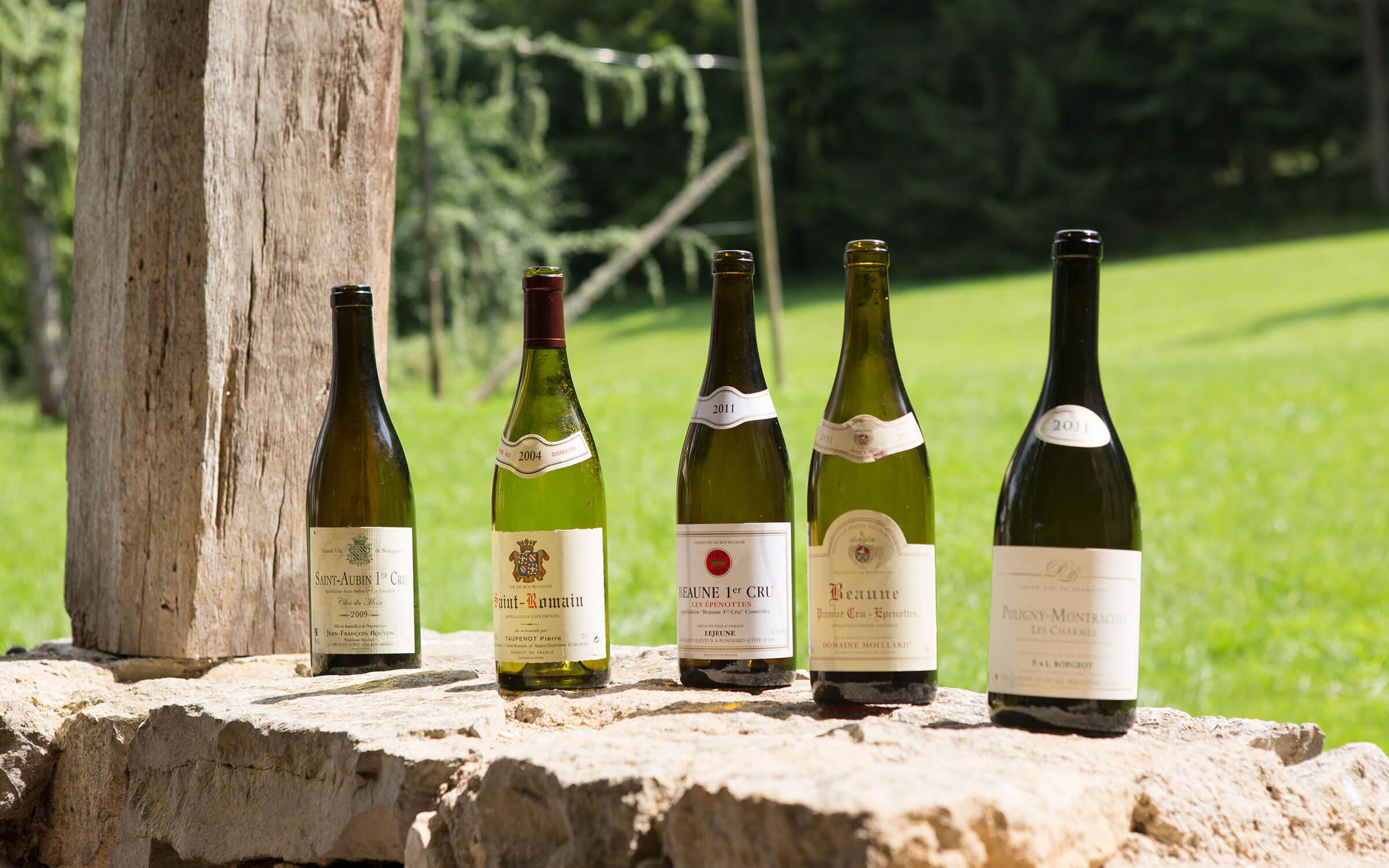At The Slow Road we believe that getting in deep and up close has as much to do with a region’s culinary culture as it does with its geography and people. And we’ll be the first to admit that for us, a great culinary experience involves a fine glass of wine or two (or three). While expanding your palate is a worthwhile endeavour in its own right, it’s made all the more rewarding when you have a sense of the history behind the bottle. In our Vines 101 series, we pull back the curtain on Burgundy wine and explore its oenological offerings.
Burgundy Wine: An Introduction
Although most of us think of Burgundy as the world-famous Côte d’Or, Burgundy wine actually comes from several regions, starting in the northernmost region, Chablis. South of there is the lesser-known Côte de Dijon, then Côte de Nuits with Nuits-St-Georges as its centre, and Côte de Beaune surrounding the capital city of wine, Beaune. Further south still is Côte Chalonnaise, with wine villages such as Mercurey and Rully. The next region is the Mâconnais, which is followed by the southernmost region, the Beaujolais. The Beaujolais is actually almost entirely part of the Lyonnais département of the Rhône, but is considered by some to be part of the greater Burgundy region and thus bears mentioning in a discussion of Burgundy wine.
Grape Varieties in the Côte d’Or
Red Wines
Unlike so many winemaking regions in the world, which use a variety of grapes, only pinot noir grapes are used for making red Burgundy wines. A red-skinned grape producing white juice (unless you leave the skins in to “taint” the juice red), the pinot noirien dates from 1375 and is also the grape used for making champagne. It was decreed the only red grape variety to be planted in Côte d’Or in 1395 by Philippe the Bold, Duke of Burgundy. He was convinced even in the Middle Ages that this was the best grape variety to be used with Burgundy’s soil type, and therefore banned the gamay variety (today used for Beaujolais wine). The pinot noir, which produces some of the best wines in the world, is unfortunately highly capricious and makes the wine producers’ lives pretty difficult, as it is very sensitive to climate, soil and handling.
An exception to the rule, a wine called the Bourgogne Passe-Tout-Grains, still exists in Côte d’Or. It combines the Burgundy pinot noir (one-third) and the Beaujolais gamay (two-thirds) varieties. This is a very basic table wine, however, and is rarely exported.
White Wines
 Chardonnay grapes make most of the great white wines of Burgundy. This variety, much more user-friendly for producers than the pinot noir grape, represents for many what a truly great dry white wine should be. Its origins are uncertain, although a tiny village in the Mâconnais is also called Chardonnay.
Chardonnay grapes make most of the great white wines of Burgundy. This variety, much more user-friendly for producers than the pinot noir grape, represents for many what a truly great dry white wine should be. Its origins are uncertain, although a tiny village in the Mâconnais is also called Chardonnay.
There is one other grape variety for white wine, called aligoté. These grapes make a fruity, fresh white wine, which you will always recognize because it is called Aligoté on the label. The wine they produce must be drunk young, in contrast to the chardonnay, and is generally used in Burgundy as a simple, refreshing apéritif. It’s also the wine that is mixed with cassis to make the regional specialty, kir. Before the chardonnay grape became the preferred cepage at the end of the 19th century, aligoté was widely planted in Burgundy.


